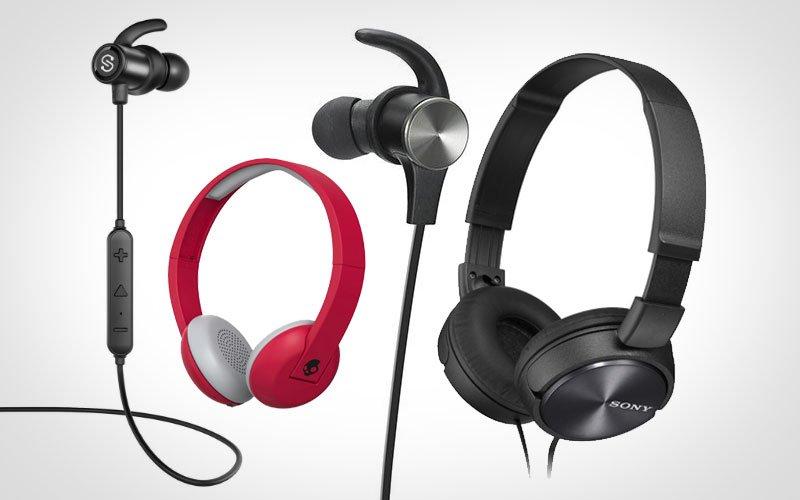Before getting into, “Would you recommend cheap true wireless headphones?”
Let me first explain what true wireless headphones are & things you should keep in mind before buying one.
Gaming systems, smartphones, computers, televisions, and other contemporary electronic gadgets can benefit from wireless headphones. People use them every day while working out, watching TV late at night without disturbing others, listening to music, and just enjoying the freedom that wireless headphones provide. Everything you should know about True Wireless headphones is listed below.
Firstly, “wireless” and “true wireless” headphones are different. The critical difference is that “true wireless” headphones have no cord or connector between the earpieces. “Wireless” headphones are connected in some way (over-the-head, as with Bose, or over the back of the neck, as with many sports sets), but they don’t require a phone jack.
Now let’s have a look at the buyer’s guide before buying a truly wireless headphone:
- Sound Quality
- Battery Life
- Wireless Range
- Comfort and Design
- Warranty
- Price
In truly wireless headphones, sound quality is a crucial consideration. This is owing to the way audio is wirelessly delivered from an audio source to headphones. Unlike corded headphones, Bluetooth headphones are wireless.
At the source, a digital audio signal must be compressed before being transmitted to headphones via a wireless technology such as Bluetooth. The transmission will be received by the headphone, which will unpack the digital signal and convert it to analogue. Sound quality may suffer as a result of compression and wireless transmission.
The distance between the headphones and the source, the number of obstructions (walls, etc.) between the source and the headphones, and the Bluetooth audio codecs that your headphones and source support can all affect sound quality.
True wireless headphones have a soft underbelly when it comes to battery life. Manufacturers find it difficult to fit larger rechargeable batteries in their driver housings due to their compact size. Instead, the maker has devised a clever solution: the battery is integrated into the carry case, which is referred to as the “charging case.”
Most genuine wireless headphones, on average, endure roughly 3 hours of use before becoming entirely depleted. Charging cases come in handy in this situation. A good charging case can extend the life of your headphones by at least 5 to 6 hours.
However, don’t be fooled by what you see on manufacturers’ spec sheets. There are several variables to consider when determining how true wireless headphones’ battery life is depleted. The consumption of battery life, for example, can be influenced by volume. The more powerful the sound, the more energy it consumes.
Bluetooth’s inability to provide long-range coverage is a misconception. The range capabilities of Bluetooth classes ranging from 2.4 to 2.485 GHz vary.
Bluetooth Class 1 has a range of up to 328 feet (100 m).
Bluetooth Class 2 has a range of up to 33 feet (10 m).
Bluetooth Class 3 has a range of fewer than 33 feet.
Almost all audio sources, such as mobile phones and laptops, are equipped with only a Class 2 Bluetooth device. It’s only natural for genuine wireless headphones makers to include Class 2 Bluetooth functionality in their products.
It’s nice to have an extended Bluetooth range, but we shouldn’t put too much emphasis on it. It would help if you considered both the speed of transmission and the amount of data that may be conveyed to obtain high sound quality. Better transmission technologies, such as Wi-Fi, are capable of doing this.
The lack of cords in headphones adds another layer of convenience, which may be why genuine wireless headphones have gained popularity in the last two years.
When looking for the best true wireless headphones, consider the amount of comfort and functionality they will provide. Otherwise, you’ll miss the point of having a pair of cable-free headphones in the first place: mobility and comfort.
The manufacturer may install a larger battery into the casing to extend the battery life of true wireless headphones. It can become large and even unattractive as a result of this. True wireless headphones, even the top brands, and most costly versions have their fair share of snags as a technology in its early stages. That’s why it’s critical to think about warranty and return policies before making a final decision on your next purchase.
It would be ideal if you could test the headphones on first to assess the build quality. If you’re preparing to buy something online, familiarise yourself with the manufacturer’s return policy and customer service. Putting its high-end branding aside, making fabulous true wireless headphones isn’t cheap. It’s an enormous difficulty to produce high-quality music in a compact package with minimal power. To overcome them, manufacturers have to spend on R&D. Despite this, if you don’t want to spend a lot of money but still want a good pair of true wireless headphones, several less expensive options are available. Here are some models you might wish to look at in no particular sequence.
Now let’s look at “Would you recommend cheap true wireless headphones.”
The degree to which it is a bad idea is determined by your willingness to take a risk with your money. While the low costs are tempting, you will almost certainly get what you pay for.
Because these things rarely come from organizations with experience in headphone design, quality control, or customer service, it’s crucial to know what you’re getting into. These low-cost, high-feature headphones and earbuds are usually one-offs that an investor or a group of investors orders from a headphone manufacturing plant (often one that builds for companies that specialize in headphones) that offers a menu of body designs, parts, packaging, and other options for such buyers to choose from.
The buyer can choose from column A for a design, column B for drivers, and so on.
They’ll give them a strange-sounding name, arrange a production run of hundreds or thousands, and sell them on Amazon. This procedure involves no testing, sound design, quality control, or anything like that, which is why the prices are so low: By not paying workers to design and test their items, a vendor can save a lot of money.
When these “businesses” sell out of their inventory, they usually move on to making a completely different type of tech product. Alternatively, they may shut down completely, with the investors moving on to another project. Sometimes you’ll get lucky, and the headphones will work fine, but most of the time, they will fail miserably. And if you’re unlucky, you’ll probably be out of luck if they break, arrive with a fault, or just plain stink. Whatever the case may be, the company that created them is likely to go out of business within a year.
I can’t imagine how aggravating that would be for you. But how unhappy would you be if you had a Rs.500 note in your pocket and misplaced it? That’s how you’ll feel if these headphones don’t work. If you don’t want to risk spending Rs.500 a few times over a year or two, I recommend saving up for something you truly desire. If the prospect of having to buy another pair now and then isn’t too bothersome, go ahead and take a chance—you could get lucky.
Author Bio – Vivek Roy is an enthusiastic Tech and gadget blogger from India. He loves to share tips and news from all around the world. For more information about him visit his website Leaf Studios.






